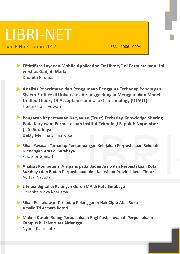Folia Medica Indonesiana
ISSN 0303-7932
Vol. 39 / No. 4 / Published : 2003-10
Order : 8, and page :242 - 250
Related with : Scholar Yahoo! Bing
Original Article :
The latest clinical epidemiological data of ischemic and hemorrhagic stroke patients in surabaya and the surroundings a hospital-based study
Author :
- Moh Hasan Machfoed*1
- The Surabaya Stroke Collaborative Study Group
Abstract :
Background and Purpose.The study was performed to find current patterns of ischemic and hemorrhagic stroke patients who admitted to hospitals by determining their clinical data. The purpose of this study was to contribute the data on stroke population in Indonesia exactly. Methods. Data were prospectively collected by neurologists from hospitalized stroke patients of each hospital in Surabaya and the surroundings, during a six-month period of time, from December 2002 to June 2003. Results, A total of 1397 patients who presented with stroke diagnosis were studied. 808 of patients were male, 589 were female. 1001 (71.73%) of patients suffered from ischemic and 396 (28.27%) from hemorrhagic stroke. Mean age was ± 77.43 years for ischemic and ± 75.21 years for hemorrhagic stroke. Siriraj score used in the study was proved to be significant in differentiating the ischemic from hemorrhagic stroke. Proportion of hemorrhagic was significantly higher than that of ischemic stroke in hypertension stage 2. Glasgow Coma Scale (GCS) was significantly lower in hemorrhage than in ischemia. No different frequencies of risk factors on the both types of stroke. Hypertension was the most important risk factor either in infarction (73.1%) or in hemorrhage (84.6%) that was significantly different (p. 0.000; CI 95%: 1.487 – 2.746). CDP Cholin was the most neuoprotectant drug given to ischemic and hemorrhagic stroke. ACE-inhibitor was the most anti hypertension drug given to ischemic and nifedipin was prominent in hemorrhagic stroke. Among the risk factor drugs, anti cholesterol was the most drug used in ischemic, and anti arrhythmia in hemorrhagic stroke. Aspirin, ticlopidine, dipiridamol and cilostosol were the common drugs used by the ischemic stroke patients. During hospitalization, no surgical intervention performed to either ischemic or hemorrhagic stroke patients. Patients experienced clinical improvements during their hospitalization and the clinical condition of hemorrhagic patients were better than that of ischemic either on hospitaladmission or on release. The percentage of death in the ischemic and hemorrhagic stroke patients was 4.9% and 13.9% of all hospitalized patients, respectively. Hospital discontinuation and release were prominent in ischemic stroke. Conclusions. Mean age for all stroke patients was 76.32 years. Stroke occurred in people over 75 years of age. The Siriraj stroke score was a valid and specific scoring system for the diagnosis of stroke. Hypertension was the most important risk factor either in ischemia or in hemorrhage. There was an overuse of the anti thrombotic drugs given to the patients. No surgical interventions were performed to all patients studied. The percentage of death in hemorrhagic patients was high. This study provides epidemiological data on current patterns of hospitalized stroke patients in Surabaya and the surroundings as well as in Indonesia.
Keyword :
hospital, ischemic stroke, hemorrhagic stroke,
References :
Badam P, Solao V, Pai M, Kalantri SP,(2003) Poor accuracy of the Siriraj and Guy’s hospital stroke scores in distinguishing hemorrhagic from ischemic stroke in a rural, tertiary care hospital - : Natl Med J India
Broderick JP, Adams HP, Barsan W, Feinberg W, Feldman E, Grotta J, Kase C, Krieger D, Mayberg M, Til,(1999) Guidelines for the Management of Spontaneous Intracerebral Hemorrhage - : Stroke
Archive Article
| Cover Media | Content |
|---|---|
 Volume : 39 / No. : 4 / Pub. : 2003-10 |
|












